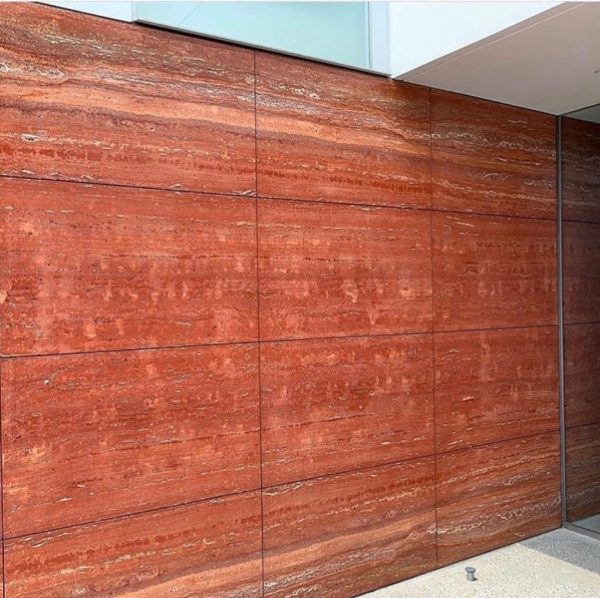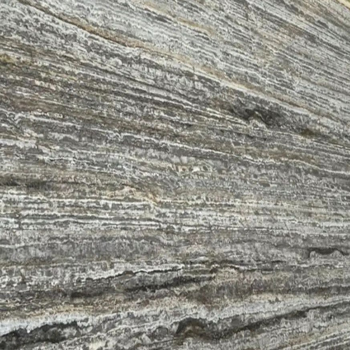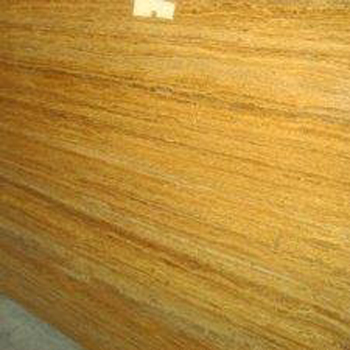Travertine
Travertine
Travertine rocks are classified as porous sedimentary rocks. Travertine is a type of limestone that is formed from the sedimentation of mineral water springs, especially hot water springs.
The best-selling stone for building facades is known as travertine. Travertine has high porosity, which makes this stone the best option for facades, and it also has a variety of color themes.
How are travertine stones colored?
The activation of a substance in the stone and despite the high temperature and precipitation, the travertine stone turns into different colors of white, red, yellow, orange, and brown. With a wide range of travertine colors and designs, choosing the right stone for your project can be difficult. Paying attention to choosing the right color for building decoration is one of the important factors in choosing a stone. However, other factors such as region, application, etc. will have a significant impact on your choice. Of course, you can get advice from the colleagues of Taba Stone Company to choose the right stone.
History of travertine
As one of the most important construction materials, travertine has a long history. The first discovery of travertine dates back to 75 BC. This luxury and popular building stone is found in abundance in Italy. For example, the most famous Roman wonder can be called the Colosseum.
Travertine is one of the most widely used stones, one of the most important reasons for this is its availability. Even today, this stone is used in a large amount, especially in exterior facades. Also, with the progress of science and technology, processes such as resin and epoxy are applied to this stone, which has made this stone more efficient and durable.
Features of travertine stone
- Limestone sedimentary rock
- It has wavy and sloping layers
- Being porous
- Resistant to abrasion and impact: Travertine’s durability has made it one of the most popular building materials for centuries. To understand this issue, we can refer to the Roman Colosseum, which has remained intact despite the passage of years.
- Ease of cutting and shaping: Travertine is much easier to cut and shape than granite and marble.
- High resistance to pressure and heat: as stated in the way they are formed, travertines have high resistance to pressure and heat.
- Good thermal and sound insulation: This issue is due to the presence of porosity in the travertine stone. Their heat insulation has made them show good resistance to fires.
- Good adhesion with mortar: this feature is also due to the presence of porosity in travertine. Because despite these holes, cement mortar penetrates inside the holes during stone installation and makes them adhere better to the facade and prevents it from falling. In the case of stones such as granite, which have very little porosity, it is a little more difficult to install them.
- Lightweight: It is quite clear that the porosity in the stone reduces its weight of the stone and when it is used in the building, it causes less load to enter the main skeleton of the building.
- High polishability: Travertine stones have high polishability, that’s why they are widely used for volume facades, including Roman facades.
- High water absorption: This issue is largely resolved with resin and epoxy processes and finishes such as polishing.
- Variety of designs and colors: Travertine comes in different colors and designs due to impurities in it. Some of them are white Abbasabad travertine, and some of them, like Azarshahr red travertine, have strong colors. Click here to see all types of travertine stones.
Travertines have layers, these layers make this stone wavy. However, you may have heard the name wavy and non-wave travertine. This issue goes back to the way this stone is cut in stone factories. We have two types of cutting for travertine stone, which we will briefly explain below:
Vein cut and cross-cut
Vein cut is cut in the same way as it is extracted from the mine, i.e. wavy. in such a way that the stone is cut vertically so that the veins and waves remain the same as before.
In waveless cutting, which is more popular today and is more common, the cup is rotated and cut in the direction of the veins, in this case, a waveless stone is obtained.
According to this issue, after cutting the Travertine stone, it is divided into different degrees based on its characteristics, such as few and many veins and other things.
Application of travertine stone
- The most important use of travertine is to use it as an internal and external stone facade. The most important and common stone for the facade, especially the Roman façade, and even the modern facade, is the travertine stone. Because this stone has high porosity, it has good adhesion and is less heavy. In addition, they are compatible with different weather conditions and unlike marble, which does not change color against sunlight. But its other uses:
- stepping stone
- Flooring: due to the layered and porous structure of these stones, there is less possibility of slipping in travertine flooring. Of course, since the stone is porous and has little resistance, it is generally not a suitable stone for flooring and is only used for floors in special cases, such as harmony with the space.
- Stone artifacts and decorations
- Countertop: In this case, slabs of this stone are used.
- C
- It is used as wall covering and floor covering for ceremonial halls and swimming pools and even as a staircase etc.
- Especially since travertine stone is the best choice for environments with hot weather and its reasonable price for its long life will attract every buyer.
Travertine mines in Iran and the world
As mentioned in the history section, travertine is one of the many stones in Iran and Italy. There are many travertine mines in Iran.
The last word
Travertine stone is the best choice for the facade of a house or an office building because of its high porosity, which has good mortar absorption. For guidance in choosing the stone, contact the colleagues of Taba Stone Company.
Silver travertine, Brown travertine, White travertine, Red travertine, Yellow travertine



